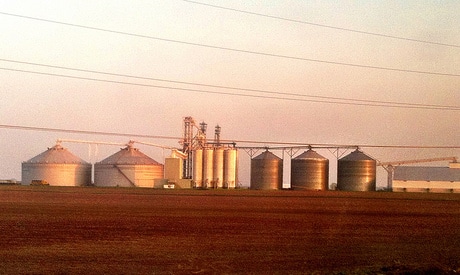
What do you call a food whose biochemistry has been tampered with to create a so-called improved item, a genetically modified food or the product of nanotechnology? Yes and yes. Our food supply is being challenged from two camps-GMOs and nanotechnology–and the assaults have some similarities as well as differences.
The topics of GMOs and nanotechnology are complex, so this is an attempt to introduce some basic information and clarify the confusion that can easily arise when sorting through these concepts.
Nano and GMO
Genetically modified organisms are living things whose genetic material (DNA) is changed in ways (known as genetic engineering or biotechnology) that do not occur in nature. The introduction of certain fish genes into tomatoes to make them frost resistant is one excellent example of the use of GMOs to produce a GMO food.
Read more about why you should avoid GMOs
Nanotechnology involves the creation and manipulation of particles at a nanometer level (which is one hundred thousandth the diameter of a single strand of your hair) to produce new materials. Rather than introduce a substance from another organism, the changes are made within the existing form. Scientists who participate in food nanotechnology move and put together molecules and atoms to create foods that provide more nutrition, have a longer shelf life, or taste better.
Beyond food, nanotechnology is used in many other areas, including medicine, personal care products, sports equipment, food packaging, home products, pesticides, and clothing. For example, scientists used nanotechnology to develop tableware with a nano silver coating that can kill food-borne bacteria
Food packaging also is changing. Researchers are developing “smart” packaging that incorporates nanoparticles designed to let consumers know when food is going bad. If you drink Miller Beer, the bottles are composed of nanoparticles of clay to help extend shelf life.
Who is Involved?
Monsanto is the number one culprit in the GMO arena, along with Dow, DuPont, and Syngenta. The Monsanto and DuPont names also appear on the list of nanotechnology players, alongside BASF, Cadbury-Schweppes, Cargill, General Mills, Kraft, Nestle, PepsiCo, and Unilever.
Some of the companies are developing nano food and food packaging innovations while others are involved in new pesticide and plant growth applications. Therefore, from the fields to the food itself and its packaging, nanotechnology is having an impact on our food supply.
Safety Issues
The safety concerns surrounding GMOs have been widely discussed on this website and by local, national, and global organizations. Basically, there’s much we don’t know about GMO products and their impact on our health since the long-term studies have not been done.
Remember, however, that absence of proof of harm is not the same as being safe. At the same time, researchers do know that when the modified genes turn on, they can release allergens not typically present in the food item, and that fact alone can translate into significant health problems for many people.
Similarly, use of nanotechnology in food production has raised red flags. One, for example, is that nanoparticles are so tiny they may get through two critical barriers in the body: the blood-brain barrier, which protects the central nervous system from exposure to certain substances via the blood; and the placental barrier, which protects the fetus. What impact can nanoparticles have on the brain, heart, liver, and other organs throughout the body? Experts do not know the answer to that question yet.
Because they are so incredibly small, nanoparticles often are more easily absorbed by the body and also can make other substances more readily available. While this may sound like a positive characteristic (and it can be when better absorption of critical nutrients is the goal), it also means nanoparticles may cause unsafe levels of some chemicals and toxins to accumulate in the body.
According to John Lawton, a scientist who authored a report from the Royal Commission on Environmental Pollution, “There is virtually no data on chronic, long-term effects on people, other organism or the wider environment” concerning the risks of nanotechnology. One of the dangers observed thus far has been in sunscreens, which contain nanoparticles. Research has shown that sunscreen nanoparticles (e.g., nano-titanium dioxide) can kill beneficial bacteria and soil microbes as well as have a detrimental impact on brain cells in mice, which could result in brain damage.
The Bottom Line
Advocates of both GMOs and nanotechnology in food, food processing, and agriculture like to say that these technologies will help solve the world’s hunger and malnutrition problems. Yet the great unknowns associated with these two approaches, as well as the detrimental impact they can have on biodiversity, small farms, and both animal and plant life are staggering.
The powers that be would like consumers to remain in the dark when it comes to what’s in their food. As a recent article from the American University School of Communication noted, “reports from the Environmental Protection Agency (EPA), GAO, academic researchers and manufacturers reveal the downside of such rapid development [of nanotechnology]” and “thirteen years after Congress created the National Nanotechnology Initiative (NNI) to advance the field, questions about as to what impact these small particles might have on the environment, as well as on the human body.”
Does that sound like nanotechnology is a safe bet? GMOs and nanotechnology in the food and agriculture realms have some differences, but they are similar when it comes to safety: too many questions remains unanswered.
Photo Credit: Jeannette E. Spaghetti










